|
I obviously couldn't take photos of any of the children in hospital - but rest assured, out of shot of these photos are giggling children, parents and staff!
1 Comment
Another branch of Pallapupas' integration strategy is their university course. Pallapupas run a 3rd year elective for medical students at the Universidad de Barcelona.
The first session is a lecture by Xaví on Pallapupas, its beginnings, its mission, values etc. The end of this session is interrupted by 2 members of the Pallpupas team. The students immediately get a sense of why the programme works. The next sessions consist of role playing medical procedures without and then with clowns being present. The rest of the sessions are a kind of intro clown workshop that gives the medical students tools to be open, imaginative, playful and confident in their interactions with the children on the ward. At the end, the doctors will have started to discover their own 'inner clown'. Pallaupupas are really committed to the idea that people can experience their illness in a different and more 'healthy' way. Xaví would like it that one day, there would be no need for hospital clowns, becasue the medical environment and staff, and attitudes of the patients and parents would have evolved so that they could live their illness through a different lens - one of play and laughter and imagination. I think that might be wishful thinking - but only because this hospital isn't about to give them up! On my travels, in general I have been amazed at how similar our approaches as hospital clowns have been, and even more so, in how the universal clown language really does exist - we aren't working on a cerebral level, but on an emotional one, and of course this transcends culture/language/heritage. It is about being Human.
But there have been differences, and I have found these to be enlightening and interesting to mull over! Here are a few I have noticed while visiting Pallapupas:
So I have been thinking a lot about artistic support for hospital clowns, what this might look like, how we avoid 'burn-out' and keep ourselves creatively tip-top after years on the floor. But i think it is fair to say, that without personal professional responsability and rigour, no amount of training or artistic support will save us.
As Xaví said, "we as individuals, have to bring it from home. Pallapupas is not a Clown School". Monthly training, or coaching or residential courses are all very well and good, but if we feel like we know it all already, or if we feel bored or uninspired, then maybe that is all (hard raised) money down the drain. It is up to US to find the inspiration and spark each day we work on the floor, to explore new possibilities and frontiers in the work we do, to encourage, surprise and push one another. And from there, training or coaching or residential courses can be the icing on a delicious and nutritious cake. Xaví, one of the most skilled Hospital Clowns I have seen on my travels, writes notes at the end of each day he works. He has worked with Pallaupuas for 11 years, and was Artistic Director for 4 years. Grounds, you might say, to pat yourself on the back and cruise your way through the hospital clown day. But you don't get to be that good without the kind professional rigour that he talks about. If you don't already write and reflect on your own practice after each day working on the hospital floor, start. Ingredients:
Method: First, build trust and a good relationship between the clowns and the medical personnel: The medical team often saw Pallapupas assisting in medical procedures in the Hospital de Dia – distracting children when they were getting injections or lines put in. They were impressed by their level of professionalism, and by the fact that it made the nurses jobs easier (less anxiety, less attempts to put a line in because the child is relaxed/not moving). Staff saw that this approach could easily be transferred to a surgical setting Take things slowly, be patient and keep talking: Initially the clowns just visited children as they were waiting for surgery. But they found that the moment of separation (as they were taken to surgery) was made worse, as the children had built relations with the clowns. Follow your instincts and trust in your skills: One time, the medical team suggested that the clowns come into surgery too. They changed quickly and went in. It was a success. Learn from your mistakes and ask questions - never go home with a question unanswered: The team focussed in on what needed to happen with each child using trial and error, hand in hand with the medical team. It didn't always go smoothly, but now they have a clear methodology that works for everybody. The Pallapupas surgery programme was a total collaboration between medical team and the clowns, and this is very clear to see. It works because it grew organically, with trust and with time - and becasue everybody wants it to work. 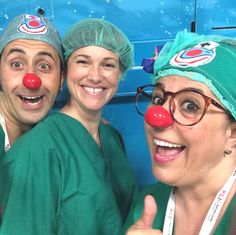 Well. Let me tell you. My mind has been blown. Yesterday and today I observed the Pallapupas clowns visit and accompany children as they went into Surgery to be aneasthetised. I saw children giggling as they walked down the corridor to the Surgical Room, lying on the bed about to go under general aneasthetic and laughing their heads off! Waaaaaaa!! This work is SO EXCITING AND EXTRAORDINARY AND IMPORTANT. And it's not that these kids are all unusually brave and resillient. Before the clowns come to meet them, they are often in floods of tears or pale and quiet with anxiety. And that is not to mention the parents... I will explain a little the mechanics of how it works. There are 2 surgery rooms and each clown takes responsability for 1 room each. In a morning, each room might have 5 or 6 proceedures scheduled. The clowns are given the list in the morning. Once they are in their surgical garb, they run through who is on the list, ages, what they are in for and check if there are any repeat customers (these can be more challenging as they can be more anxious...or more excited becasue they know they will see the clowns). Then they begin. There is a very clear structure and mission for the day. They meet the child and set up a game. The game is usually something that will involve a journey (along the corridor) and going to a new place (the surgical room). It will also involve blowing or breathing into a mask. And a lot of silliness. Then they leave and meet the next child and do the same with them. Then they check the surgical room to see how long until the first child goes in. When there is only 10 or 15 mins to go, they will go back and continue the game with the first child and start to incorporate the idea of using the mask. This will be a playful continuation of the same game. They might also leave and check in with the second child too, depending on timings. Then the medical team arrive, and with any luck, the game has reached the ideal point to go on the journey. They go down the corridor together (on foot). A parent is allowed with their child in this hospital too. Once in the surgical room, the child will need to put on the mask and breath into it. Then the child is asleep, and almost without fail, the parent will burst into tears. One of the clowns will accompany the parent out of the room to the cafe or waiting room, and the other goes to check-in on the second child. The clowns find games in the same way that they do on the floor - by using what is there. On Tuesday, Oxígena was training to be a cheerleader. She needed a song - the girls mum chose Beyoncé. A nurse played Beyoncé on the ward computer, and the clown started to dance. Then she realised she needed a wind machine to make her hair flow. So off the clowns went to find a wind machine. They came back later with the face masks for the girl and her mum. They all had to blow through the masks at the clown (much hilarity and slapstick). Then they decided to film a music video. They would make this super-modern and do it down the corridor (in the surgical room)...
And the idea of all of this is to humanise the environment. To help children and thier parents to play, even when they are feeling anxious or scared. To distract them. To help the child live their experience in a different and better way. It was INCREDIBLE to see and hear how integrated they are in this environment. Several times, doctors, nurses and anaesthetists came up to tell me what a great and important job the clowns do. One even said she wanted to do a study on the different types of ways that the clowns engage! It was clear that the clowns make their jobs easier. They are just a part of the team. No-one bats an eye-lid. They have access all areas and complete trust. And they make everyone laugh a lot. What I saw today at the Hospital de San Joan de Deu was an integrative approach to healthcare - a holistic model that puts the emotional wellbeing of the patient on a level with their physical wellbeing. It looked good. I really hope that it is our (not too distant) future in Scotland. But of course, getting to this level of integration takes time, commitment and all of the right ingredients... Something Xaví said to me that I really loved. 'We are in hospital to make friends'. And they do, wherever they go. Gelocatila, especially is an expert in making friends. She hugs and gets hugs - with hospital staff of all levels, parents, grandparents, children.
Seeing Pallapupas work in this way - open-heartedly weaving their way through the wards - they are magnetic. They so seamlessly and effortlessly break down barriers of hierarchy or fear or anxiety becasue they clearly love everyone equally and without prejudice or expecation of being loved in return. And so of course, everyone DOES love them in return. Everyone is a friend. Ah my heart sings ! Yesterday I observed Xaví and Christina as they did their rounds as Tiritín and Gelocatila. Both are 'veterans' with Pallapupas and extremely experienced. I already knew that Xaví was an excellent clown because I met him on the International Hospital Clown workshop 3 years ago and learned so much from watching him. As well as a clown he is a professional dancer, which for me is a dream combo for good clowning. Apart from being physically capable of doing cool things, clown-dancers tend to be very embodied and aware of where they are in space and time. Crucial to good clowning, and for me, a non-dancer-clown, the work of a lifetime to achieve! Christina is one of the the head clowns for this hospital. Gelocatila was like everyone's favourite (stupid!) Aunty – everyone was so pleased to see her, and she just seems to radiate love and light. There were lots of things that impressed me about what I saw yesterday. I don't want them to get all mingled up, so just now I will concentrate on the Artistic side of things that caught my attention the most: The time and space they allowed themselves to set up/develop a proposition. They were never in a rush and comitted fully to the game and to each other. For example, they entered the room of a boy they know well who was playing a Pokemon game on his computer. Gelocatina proposed to make Titirín into a 'Pokemon Evolucionado'. The boy went for it so she sat Tirotín down on a box, and he waited, excited and nervous about what was happening (and about the fact that the box might explode...you never know!) Not having any idea about what a Pokemon was, but liking the idea anyway. Gelocatina took her time using hand towels, aprons, face masks and surgical tape to make a totally nonsensical costume. She was totally committed to it which made the whole thing captivating and Tiritín was SO pleased with the results. Meanwhile, the child was giving instructions, and the 2 nurses in the room were crying with laughter. Other parents and children came over to see what was going on, like bees to a honeypot. They carry the same games and themes through the day, and stick with the problem. Their emotional state evolves with this, so they are always responding honestly and spontaneously. It makes for really creative and funny hospital clowning. I didn't see one thing that I thought, 'oooh i'll use that trick' because it was all unrepeatable, brilliant theatre, totally centred around the children, their parents and the space they were in. They always arrive with 'something' – even if that is just an emotional state, depending on what has just happened – exhaustion, excitement, nerves... I really loved this. (Example: At the start of the day, Tiritín went down the slide head first in a fit of nervous abandon. It went wrong and for the rest of the morning, he was either recovering or feeling great having recovered, or re-living the anxiety of the experience) As brilliant as Xaví is, he wouldn't have been able to do any of what I saw without Gelocatila – provoking, supporting, managing. She did this with a real lightness of touch and delight in seeing how he might get himself out of the shit she was putting him in. They quite often separated, but always knew where the other was, and it was always really satisfying when they came back together again. Above all, TRUST.
(When we visited the ward, she prompted one child to squirt Tirotín with water from a syringe as he exited a room. Later, when Tirotín decided to take revenge with an even bigger syringe (knowing that of course it would be Titotín that would end up soaked, and not the boy) Gelocatila called ahead to the boys room to warn him to get ready! Tirotín was ambushed in the corridor!) I laughed so much yesterday, and it occurred to me again, as I watched those two nurses crying with laughter with me, that the key to integration is being able to be THAT funny! Who wouldn't want them around if that is how they make you feel? More on this tomorrow... After a few days with old friends, and then a few days on my own in the mountains, I am back in Barcelona to visit Pallapupas, for the Grand Finale of my trip! It was great to have a few days on my own to reflect a little on what I have seen. And to be honest, I didn't think very much at all. I just walked. And walked. And walked. And then I cried. Ooft. Looking at the valley in front of me, the brutality and beauty of it all washed over me like a wave. I cried big fat hot tears. I am sharing this because when I tell people what I do for a living, one of the first responses is something like, 'oh wow, it must be hard seeing all those sick children? I could never do that!' And it kind of irritates me. It implies that, in some way my need to be a good person somehow outstrips my need for artistic satisfaction. But I don't do this work to polish my halo, or to be a 'good person'. What we do as hospital clowns is an exchange. It benefits me as a human being and a performer enormously. It gives me energy and a sense of purpose, and and escape from my Ego as an Artist (which is sweet relief, let me tell you). It is creatively challenging and interesting and surprising. There is no better job in the world for me, as far as I am concerned. From the very start of my journey as a Clown, working in Hospitals has always made perfect sense.
But! So much life and death and laughter and pain – so much beauty and brutality? Well. Sometimes it is true. You just have to let yourself cry. And today...watching Pallapupas in action...I cried tears of laughter. Nearly all morning. No exaggeration. These guys are wonderful. More tomorrow! I'm not sure how many years ago, but let's say LOTS, Lory Leshin and Ami Hattab (and maybe someone else, but I can't remember?) created a system of artistic coaching to support the Le Rire Medédin clowns. I didn't get the chance to get into the nitty-gritty of how it works (they have a big document and protocols on it) but It loosely involves all of the clowns having the same artistic language and all of the clowns having the right to at least 2 artistic coaching sessions per year. The coaches are clown peers who come and observe hospital days and then write a big report on what they see. The coaches also have coaches. At the heart of it is very practical, tangible artistic support with goals that are clear and achievable. Over the years, Le Rire Medécin coaches have identified and worked on general artistic stuff they felt the whole team could do with focussing on - Indirect Play, Complicité (not always being with conflict in a partnership) and playing High Status in a partnership (as they found that lots of their clowns were avoiding this.)
As part of this process, they have all participated in writing workshops, to help them to reflect on their work and analyse it effectively. I thought this was great! I have found writing to be a really useful way of processing the day artistically, but it isn't everyones cup of tea or comfort zone. It is cool that they got training in this, and that it wasn't taken for granted that everyone could do it already. And I like the emphasis and investment in the importance of reflection and analysis as an artistic learning tool. Apart from the artistic support that this system offers, what I really love is the rigour that it encourages in each artist. You are expected to have clear goals that you want to achieve artistically. To have these, you have to have thought carefully about how you work and what you do on the floor, how you want to improve. It is totally personal to your own development. I find that it is often the case that after artistic training, or a workshop, we have a boost of creativity and ideas on the floor, but over time, this gradually loses its power, until we have more or less completely forgotten about it. Or I have an idea about what I want to work on, but I don't tell anyone, and if i don't achieve it, it sort of fades away. I think this system of coaching might keep us invigorated, and give us the tools and impetus to take responsibility for ourselves artistically. It strikes me as a really sustainable, targeted and efficient system of creative support. I also imagine that becoming a coach would be great! We have a rather informal mentoring system at the moment which involves more senior practitioners giving artistic support to newer recruits. This can create an artistic imbalance as well as an imbalance of artistic responsibility in a partnership. It can deplete the more senior clown's artistic and creative juices, and inhibit the growth of the newer clown's artistic and creative juices... There is no escaping the fact that some clowns have more experience than others, and nor should we try to escape that! We can learn loads from them, after all! But they still have the right and necessity to learn and grow as artists. That should never stop. And a healthy clown duo on the floor is an equal one. It seems to me that some form of artistic coaching system might be just the way to keep us all on our creative clown tippy toes. And a way of keeping those experienced 'dinosaurs' on the floor and working with us forever! Although I wouldn't like to identify the dinosaurs in the Hearts and Minds team... |
AuthorI am a therapeutic clown and performer. Writing here is part of my wider practice and maybe some of my thoughts will trigger some thoughts of your own and I hope that helps. Archives
May 2024
Categories |
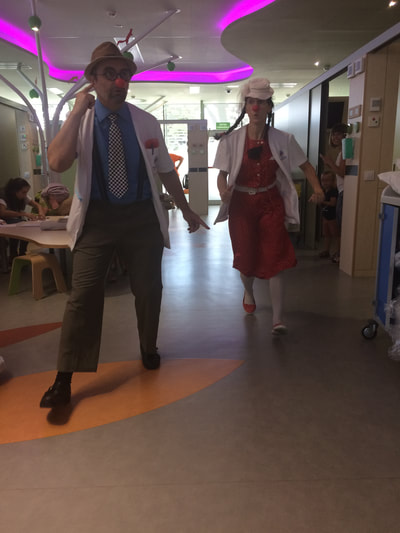
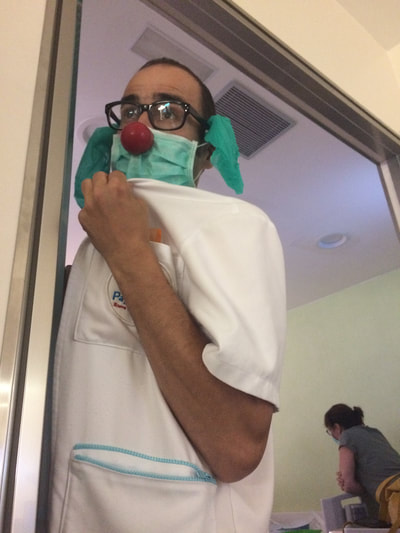
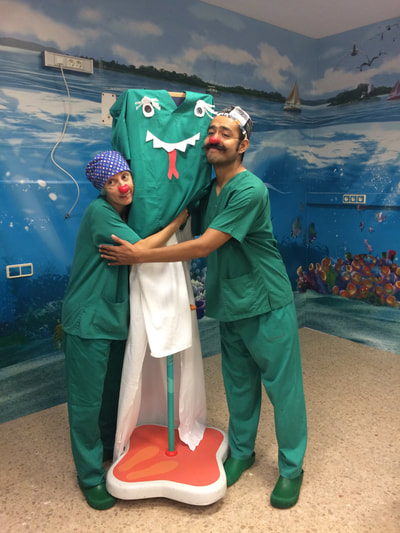
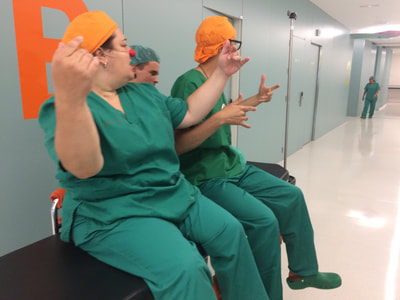
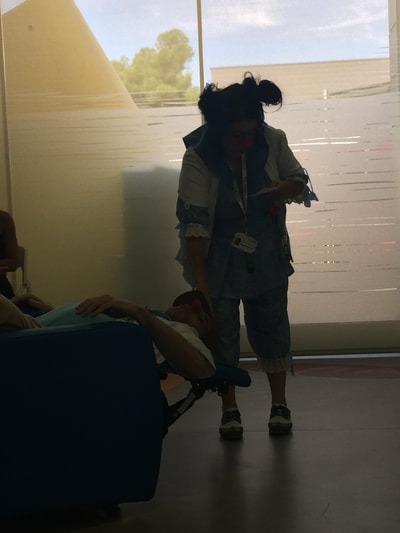
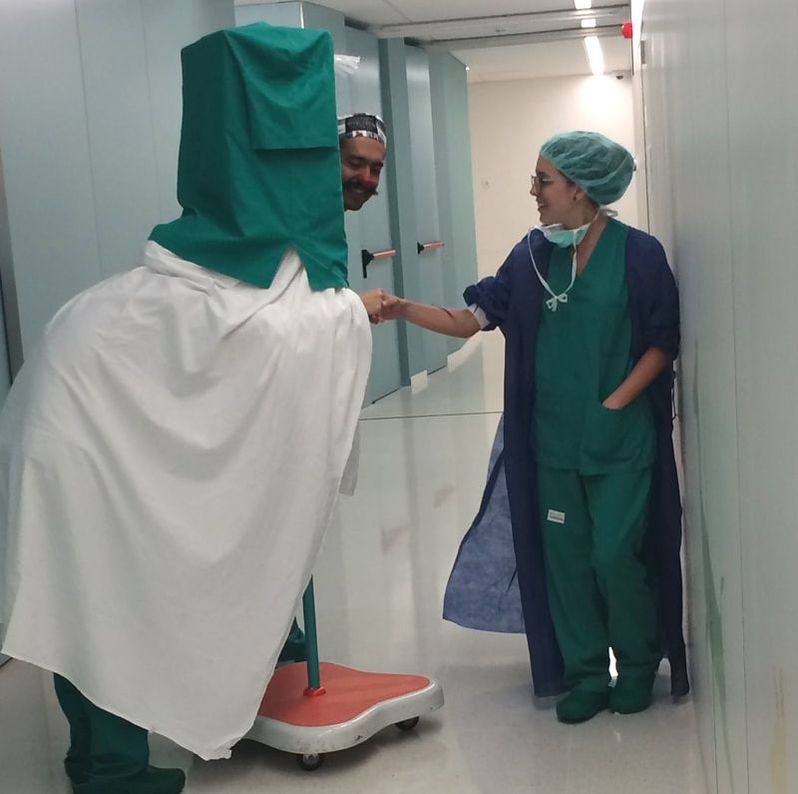
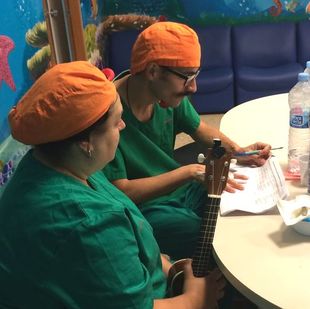
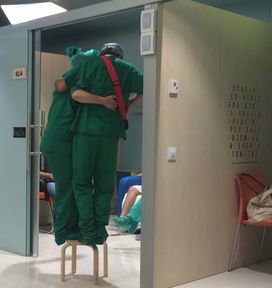
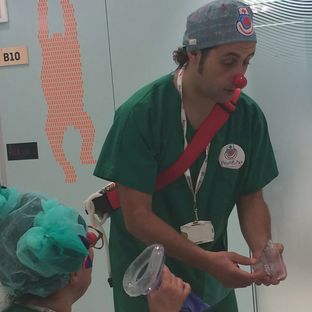
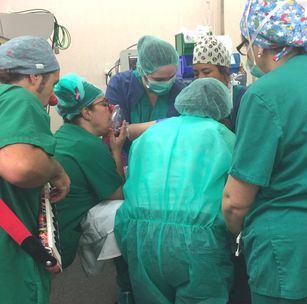
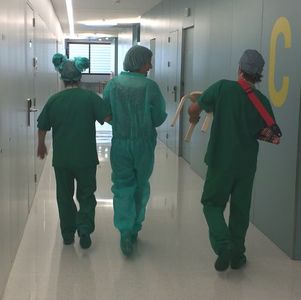
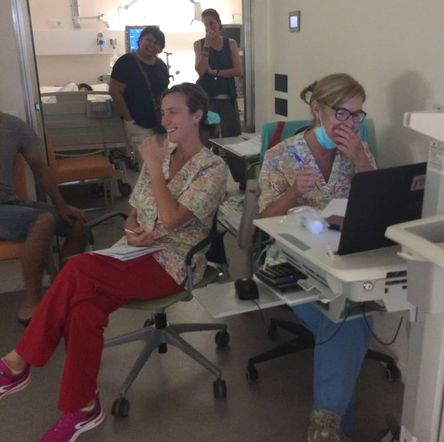
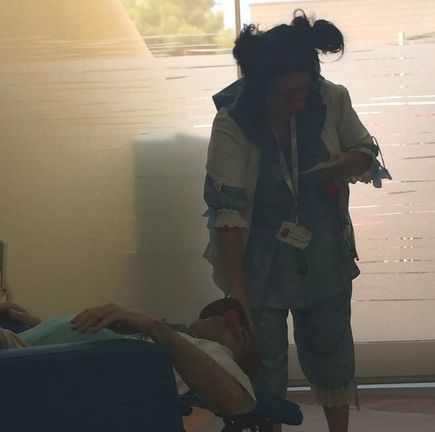
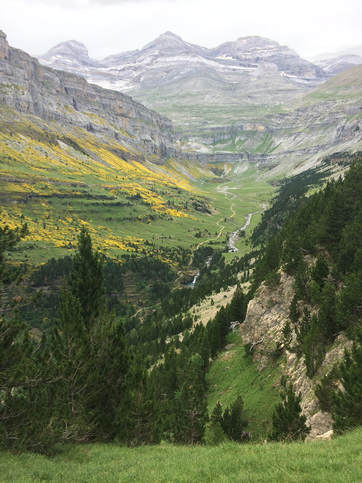
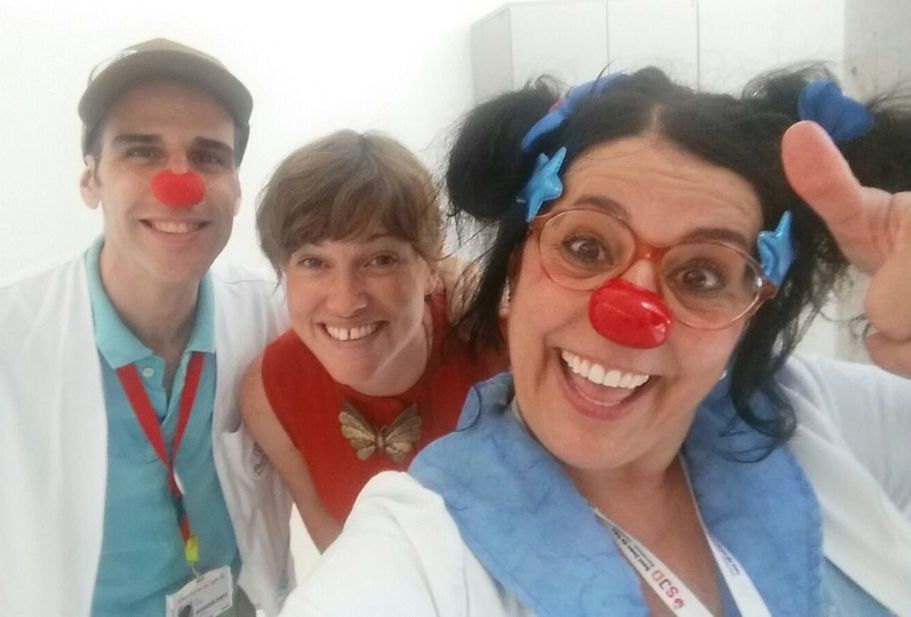
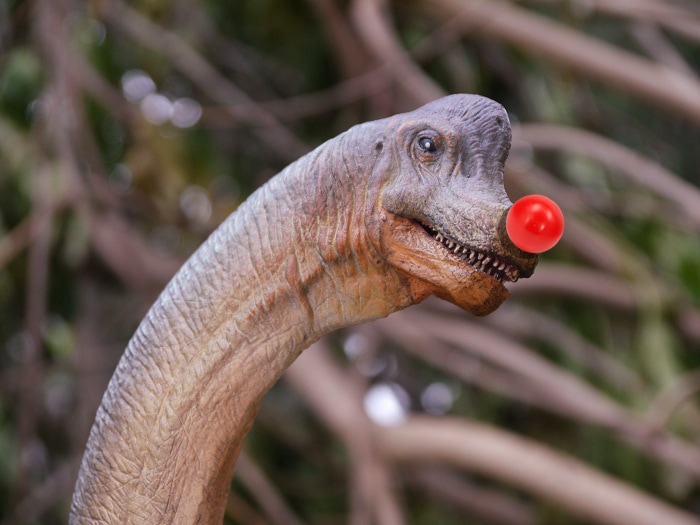
 RSS Feed
RSS Feed